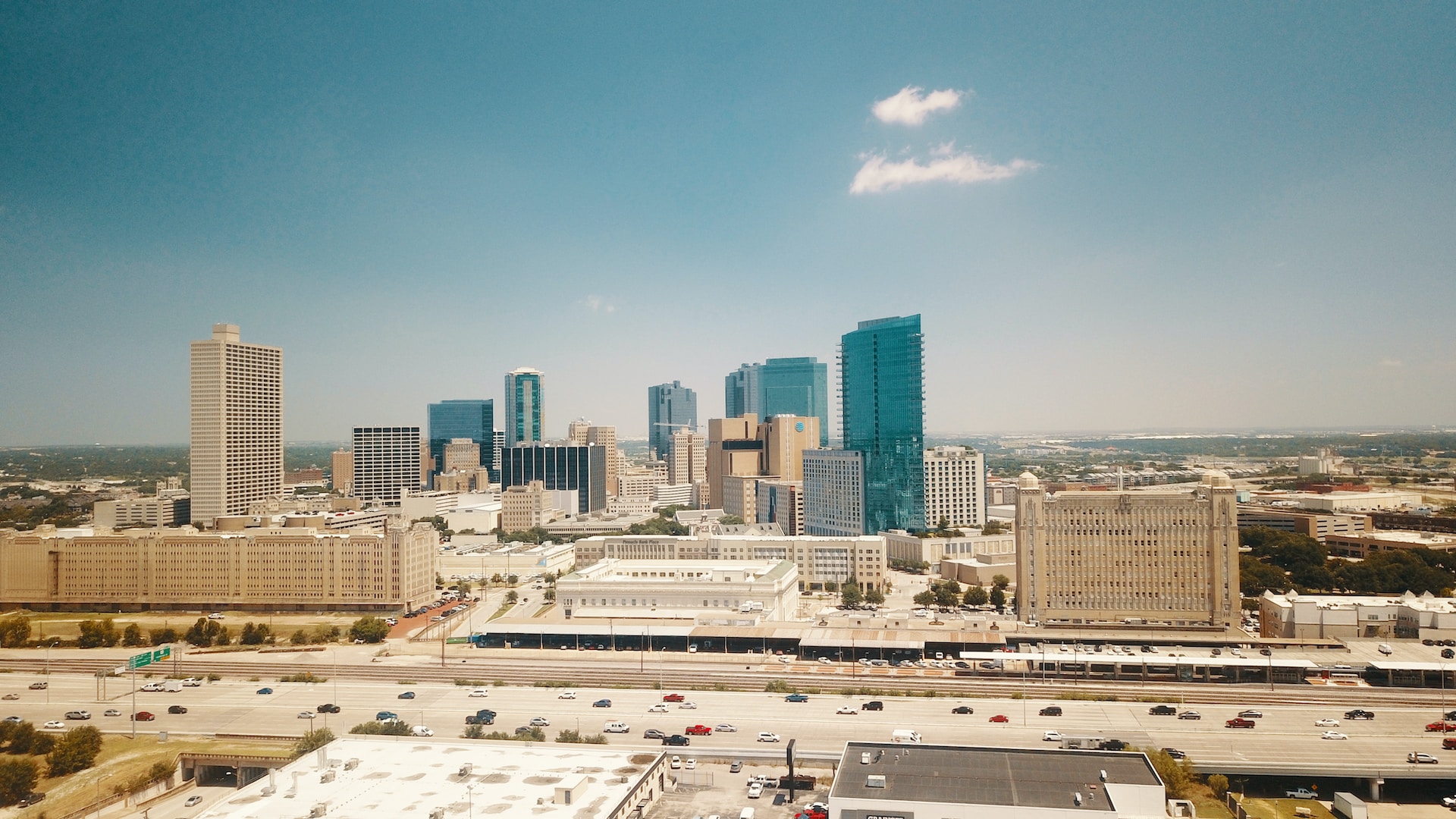Hosting companies like American Airlines, Boeing, and Radio Shack, Fort Worth, TX is a significant hub for businesses in the US. The unemployment rate in Fort Worth decreased from 3.5% by the end of Q3 2022 to 3.2% in Q4.
Its population has been averaging a growth rate of 1.9% and has been increasing for 40 decades. Despite ongoing uncertainty, thanks to changes in the city’s workforce, Fort Worth’s office space market is seeing signs of recovery.
General Area Overview & Demographics
Located in northern Texas, Fort Worth has a population of 935,508 people spread across 144.51 square miles. The racial makeup is 60.1% White, 28.9% Hispanic or Latino, 8.3% African American, 2.6% Asian, 0.8% Native American, and 0.2% Pacific Islander with 4.9% unidentified or other races.
It has an average household income of $60,389. About 19% of families and 21.8% of the population were below the poverty line, including 33.4% of those under the age of 18 and 13.2% of those 65 or older.
According to the 2018 US Census Bureau estimates, approximately 28.1% of the population was under 18 years old, while 12.2% were 65 and over. Of those aged 65 and over, 37% lived alone, while 14.9% lived with someone.
Fort Worth has several higher education institutions, including Texas Christian University (TCU), the University of North Texas Health Science Center in Fort Worth, Southwestern Baptist Theological Seminary, and Texas A&M University School of Law.
The city has a thriving arts scene, with the famous Kimbell Art Museum and the Modern Art Museum of Fort Worth, as well as several galleries and performance venues, including Bass Performance Hall and the Amon Carter Museum of American Art.
Summers are hot and humid, with temperatures regularly reaching 90s °F. Winters are mild and cool, ranging from an average low of 31°F to an average high of 59°F. The city receives, on average, 36 inches of rain each year, with spring being the wettest season.
Summary of Fort Worth Office Space Performance in Q4 2022
The vacancy rate increased by 0.3%, from 19.5% to 19.8% quarter-over-quarter. This is a year-over-year increase of 0.1% when compared to Q4 2021.
Overall, vacancy was lower in the Suburban submarket at 12.5%, while the CBD area was 19%.
Class C properties had the lowest rates compared to higher-quality A and B products. Net absorption was negative in Q4, posting a loss of 841,000 square feet. However, year-to-date absorption is positive at over 1.8 million.
What are office space rents like in Fort Worth?
Average asking rents were up quarter-over-quarter, rising from $30 per square foot in Q3 2022 to $30.45 per square foot in Q4 2022.
Rent was higher for Class A and B properties in Fort Worth’s CBD than its Suburban submarket.
Class A in CBD reached $31.47 per square foot, while Class B grew to $23.91 per square foot. For the Suburban areas, Class A averaged $30.30, and Class B posted $22.85.
Purchase & Leasing Activity
Sales volume reached around $4 billion in Q4. The performance was less than the 2021 sales volume of $6 billion.
The average sales price dipped year-over-year as well. In 2021, the average price was $235 per square foot, while in 2022, it settled at $205 per square foot.
Notable Office Space Deals in Fort Worth in Q4 2022
The following are notable deals for office space in Fort Worth:
- Goldman Sachs’ leasing of 960,000 square feet in Uptown.
- Wells Fargo’s leasing of 800,000 square feet in Las Colinas.
- Granite Properties and Highwoods acquisition of McKinney and Olive for $400 million.
- Blue Vista Capital’s acquisition of Forest Green for $12.5 million.
These are a select few among other notable office space acquisitions.
New Office Space Development Activity in Fort Worth in Q4 2022
All the new development happened in Fort Worth’s Suburban areas, with 936,000 square feet in the pipeline in Q4.
Of that supply, over 866,000 square feet was Class A property, while the remaining was Class B.
Year-to-date, over 515,000 square feet have been delivered for office space in Fort Worth.
Market Forecast for Fort Worth’s Office Space Market
Despite elevated vacancy levels in Fort Worth’s suburban submarkets, a surge of Class A inventory set to arrive in 2023 will help ease the market’s lack of available space.
Takeaways for Office Space Investors
The suburban areas show the most activity for Fort Worth office space real estate. Vacancies were lowest there, rents increased, and all new product was directed at that area.
Class B’s absorption continues to trend negatively, and most new inventory is Class A. Class A property in suburban submarkets holds the most promise for investors looking to maximize opportunity in Fort Worth. Do your research, stay diligent, and be happy investing.
































































